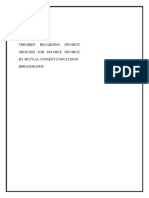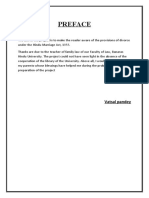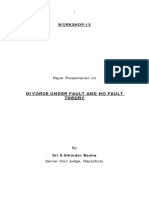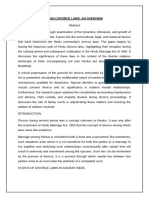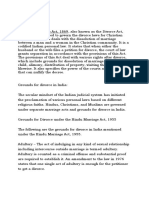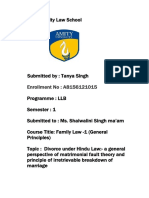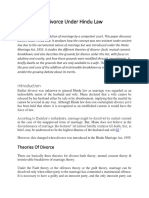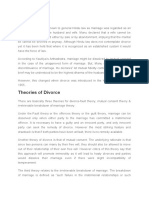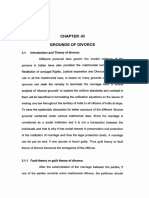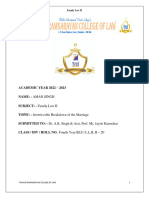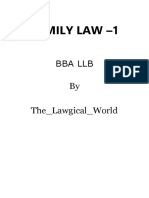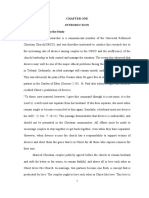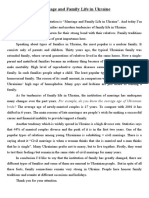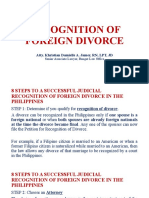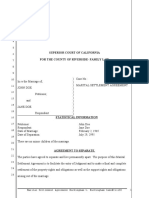0% found this document useful (0 votes)
43 views19 pagesHIndu Marriage Act
The document outlines the provisions for divorce under the Hindu Marriage Act, 1955, detailing grounds such as adultery, cruelty, desertion, and mutual consent. It discusses various theories of divorce, including fault theory, frustration of marriage theory, mutual consent theory, and irretrievable breakdown of marriage theory, each with specific criteria for dissolution. Additionally, it emphasizes that divorce cannot be granted based on mere agreement or financial compensation without legal grounds.
Uploaded by
GAUTAM CHOPRACopyright
© © All Rights Reserved
We take content rights seriously. If you suspect this is your content, claim it here.
Available Formats
Download as DOCX, PDF, TXT or read online on Scribd
0% found this document useful (0 votes)
43 views19 pagesHIndu Marriage Act
The document outlines the provisions for divorce under the Hindu Marriage Act, 1955, detailing grounds such as adultery, cruelty, desertion, and mutual consent. It discusses various theories of divorce, including fault theory, frustration of marriage theory, mutual consent theory, and irretrievable breakdown of marriage theory, each with specific criteria for dissolution. Additionally, it emphasizes that divorce cannot be granted based on mere agreement or financial compensation without legal grounds.
Uploaded by
GAUTAM CHOPRACopyright
© © All Rights Reserved
We take content rights seriously. If you suspect this is your content, claim it here.
Available Formats
Download as DOCX, PDF, TXT or read online on Scribd
/ 19

